Clinical Support: Level 3
Expand opportunities for administering vaccines
Identify priority populations for additional vaccination opportunities. Leverage touchpoints and resources in the organization and community to strategically expand vaccine administration and education among these groups.
Once your team has a strong foundation of clinical support for administering vaccinations, look for new opportunities to promote immunization both inside and outside of your practice by considering the following.
Identify priority populations for expanded vaccination opportunities
There are a variety of audiences that would benefit from dedicated education and expanded opportunities to receive routine adult vaccinations, such as:
- Staff within your organization. Offering vaccinations to staff protects their health and the wellness of your patients. Once vaccinated, these individuals can serve as “immunization ambassadors” for patients by sharing personal experiences and encouraging vaccine confidence.
- At-risk and high-risk patients. Leverage gap reports to identify patients who are immunocompromised (high risk) and immunocompetent (at risk) and would get the most benefit from routine vaccinations.
- Underserved groups. Examine data on vaccination rates and health disparities and take into consideration the social determinants of health (e.g., neighborhood and built environment, social and community context, education, and economic stability). Prioritize populations that historically have not had access to routine adult immunizations in your community.
Leverage existing touchpoints and resources
Meet your target populations where they live, work, and receive care. Examine opportunities within the organization’s care delivery system, such as:
- Telehealth appointments
- Annual wellness visits
- Walk-in and nurse clinics
- Patient education classes, such as birthing classes or programs for patients with diabetes
- COVID-19 drive-thru clinics or mobile vaccination vans
- Specialty practices
- Other sites of care such as skilled nursing facilities
Look externally at resources and organizations within the community. Evaluate existing partnerships and consider forging new ones. Examples include:
- Facilities convenient to target populations, like senior centers
- Community health workers and social workers
- Local public health departments
- Faith-based organizations
- Employee vaccination drives by local companies
- Seasonal flu clinics
- Retail pharmacies
Use these channels to not only administer vaccines, but also educate patients and their families about the importance of getting vaccinated.
Practical tips for implementation
Administering vaccines in new settings requires significant planning. Consider the following tips as you develop these offerings:
- For seasonal flu clinics, start planning as early as possible. Many organizations start planning for the upcoming flu season in the preceding spring, enabling them to order vaccines early and make adjustments accordingly.
- Allocate adequate staff time and budget—and anticipate potential constraints.
- Remember special considerations for your target audience, such as transportation for patients in rural areas and translators for patients with English as a second language.
- For any new offerings, have a communications plan in place. Consider objectives, target audience, messaging, channels, and evaluation.
- For considerations regarding documentation of vaccinations administered in new settings, consult the campaign planks in the IT/Documentation Domain.
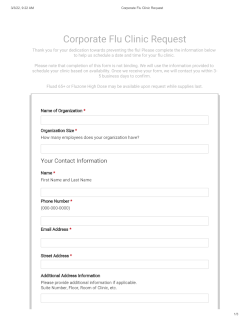
Corporate Flu Clinic Request Form
Inova
Enables organizations to request a medical group’s or health system’s support in organizing a flu clinic at their site.
View Tool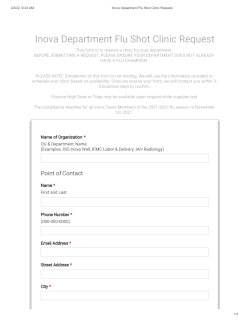
Inova Department Flu Shot Clinic Request Form
Inova
Provides a department within the health system or medical group the opportunity to request a flu clinic for their staff.
View Tool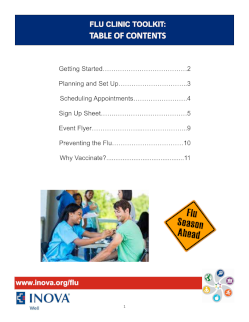
Flu Clinic Toolkit
Inova
Offers tools to employers that have engaged a health system to hold a flu clinic for their employees. The toolkit includes guidance and resources for the employer on getting started, planning and set up of a flu clinic, scheduling appointments, and more.
View Tool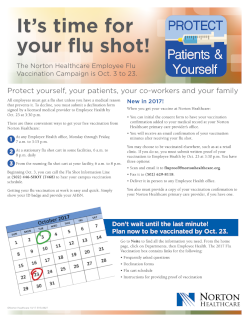
Employee Flu Vaccination Campaign Flyer and Sign-In Sheet
Norton Healthcare
Encourages healthcare employees to get their flu vaccine by providing a variety of locations and times to get vaccinated while at work and outlining the process for submitting proof of vaccination. This resource also features a printable sign-in sheet to be used at vaccination locations.
View Tool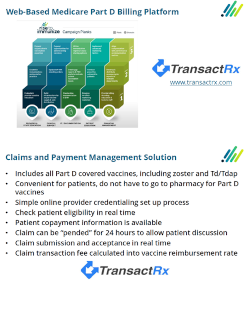
Medicare Part D Vaccine Billing Solution for Healthcare Providers
Premier Medical Associates, P.C.
Offers a vaccine billing resource that can be utilized by providers to manage claims and payment of vaccines provided under Medicare Part D. The resource includes an office workflow process that allow providers to easily submit Medicare Part D claims electronically.
View Tool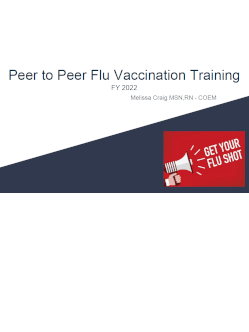
Peer-to-Peer Flu Vaccination Training
UC San Diego Health
Provides training on administering flu vaccines to other organization employees via a peer-to-peer vaccination program.
View Tool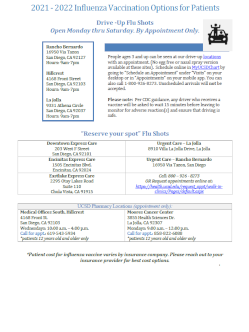
Seasonal Influenza Vaccination Options for Patients Flyer
UC San Diego Health
Provides an example of a patient-facing flyer encouraging patients to come to one of the organization’s many drive-up flu shot clinics to receive an influenza vaccine.
View Tool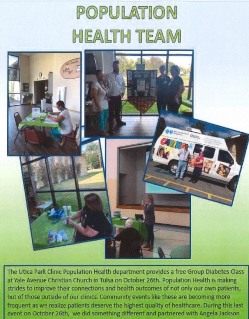
Diabetes Education Community Event Overview
Utica Park Clinic
Promotes a mobile vaccination clinic implemented by a population health department in tandem with a community diabetes program. This resource can be used to inspire similar programs within a practice setting.
View Tool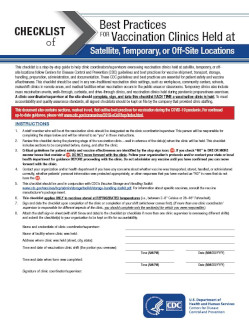
Best Practices for Vaccination Clinics Held at Off-Site Locations
Centers for Disease Control and Prevention (CDC)
Provides a step-by-step checklist to guide planning and implementation of vaccination clinics at satellite, temporary, or off-site locations.
View Tool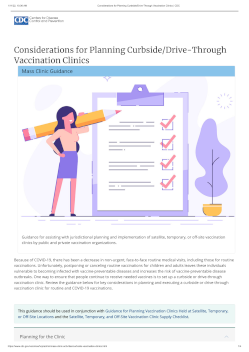
Considerations for Planning Curbside/Drive-Through Vaccination Clinics
Centers for Disease Control and Prevention (CDC)
Highlights an approach to vaccination that may be beneficial for mass community vaccination efforts, or when face-to-face routine medical visits are decreased as a result of COVID-19 surges or for any other reason.
View ToolCampaign Planks
Provider & Staff Education
Clinical Support
IT / Documentation
Patient Education
